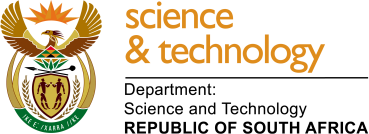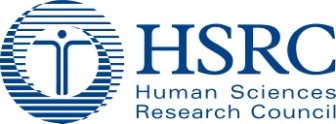
The 2015/2016 investment by the Department of Science and Technology, main founder of the stepSA initiative, supports the development of much needed indicative datasets, and provides a basis for migration and land use modelling in South Africa.
The DST stepSA 2015 project consists of specific components, aimed at contributing to the above aims. The stepSA project contribution of DST and the two research councils are threefold.
FIRSTLY, it provides much needed national and case study outputs to support public investment decisions in housing and infrastructure.
SECONDLY, it provides a unique collaborative innovation and technology development opportunity for science and practice, to produce outputs that can be utilised by a range of role players, but for which line departments and municipalities can’t afford the cost, nor has the capability to conduct the required R&D.
THIRDLY, the science, innovation and technology development, as well as application of innovative outputs within public decision making provides much needed capability development in support of the national system of innovation and government capacity.
Innovative technologies, development indexes and planning and simulation tools developed through stepSA specifically enable:
The tables below show how the different components and expected outputs are mutually supportive. The various key focus areas and platforms for ongoing innovation and impact provided through past investment, the DST and Science Council 2015/2016 investment in the forward looking technology and capability side of R&D components and the some of the current application R&D investment by other role players are highlighted.
IDENTIFY AND TRACK SPATIAL IMPLICATIONS OF CITY AND TOWN GROWTH TRENDS, POPULATION MOVEMENT (MIGRATION) AND ECONOMIC TRENDS
2015/2016 Focus |
S&T Focus for DST Investment:
|
Co-Investment Examples:
|
|---|---|---|
IPDM & stepSA VALUE BASIS |
Profiling of national and sub-regional economic activity areas and functional regions; Regional and city level demographic profiles, as well as change and transformation indicators – refined demographic changes and subsequent service demand profiles for cities & settlements; Urban and town growth profiles; Population movement and migration trends and flows; and Identification of regional growth drivers |
|
PROFILE CITIES, SETTLEMENTS AND REGIONS: UNDERSTAND SPECIFIC INVESTMENT REQUIREMENTS AND OPPORTUNITIES WITHIN CITIES AND REGIONS
2015/2016 Focus |
S&T Focus for DST Investment:
|
Co-Investment Examples:
|
|---|---|---|
IPDM & stepSA VALUE BASIS |
Household Segmentation to profile housing and service need in settlements, towns and sub-city spaces Spatial demand profiles for housing and settlement – conducted for urban poor, youth and migrants; Town and city profiles to identify the role and challenges of specific cities and towns; Identification of regional growth nodes in rural districts; and, Identification of priority service and infrastructure investment areas in the priority rural districts, nodes and settlements. |
|
EXPLORE& SIMULATE & MODEL THE MOST LIKELY IMPACT OF HOUSING AND TRANSPORT INVESTMENTS ON SPATIAL TRANSFORMATION AND SUSTAINABILITY IN CITIES & REGIONS
2015/2016 Focus |
S&T Focus for DST Investment:
|
Co-Investment Examples:
|
|---|---|---|
IPDM & stepSA VALUE BASIS |
Urban growth modelling: Adaptation for SA context: City of Joburg |
|
For more information on the DST 2015/2016 stepSA Project please contact:
Department of Science & Technology
Socio-Economic Partnerships
Ms Nonhlanhla Mkhize: Chief Director
Innovation for Inclusive Development
Nonhlanhla.Mkhize@dst.gov.za
Deputy Director: S&T for Sustainable
Human Settlements: Zinhle Mchunu
Zinhle.Mchunu@dst.gov.za
CSIR
Built Environment
Spatial Planning and Systems (SPS)
Project Co-ordinator: Dr. Pravesh Debba
pdebba@csir.co.za
Project Leader: Elsona van Huyssteen
evhuyssteen@csir.co.za
HSRC
EPD
Project Co-ordinator: Prof. Ivan Turok
iturok@hsrc.ac.za
Project Leader: Dr. Catherine Ndinda
cndinda@hsrc.ac.za


